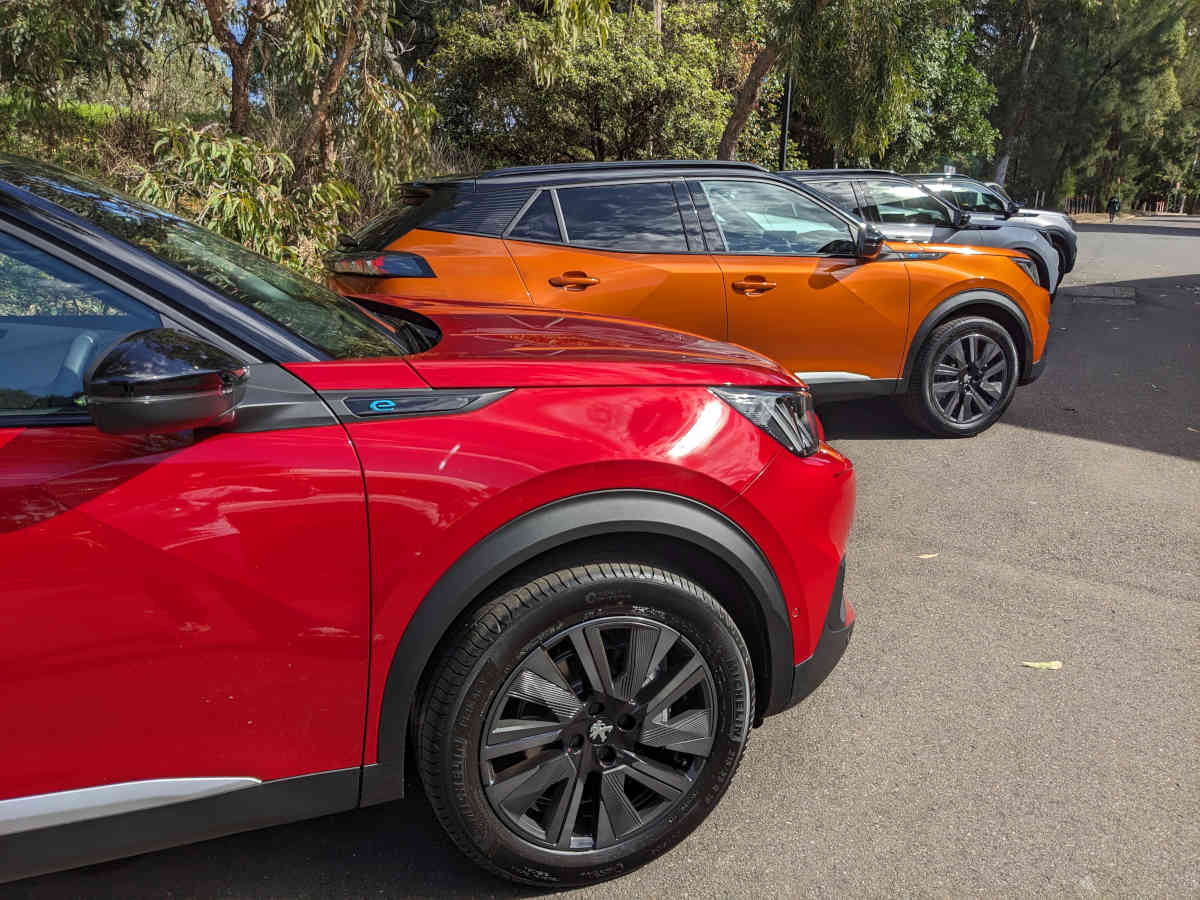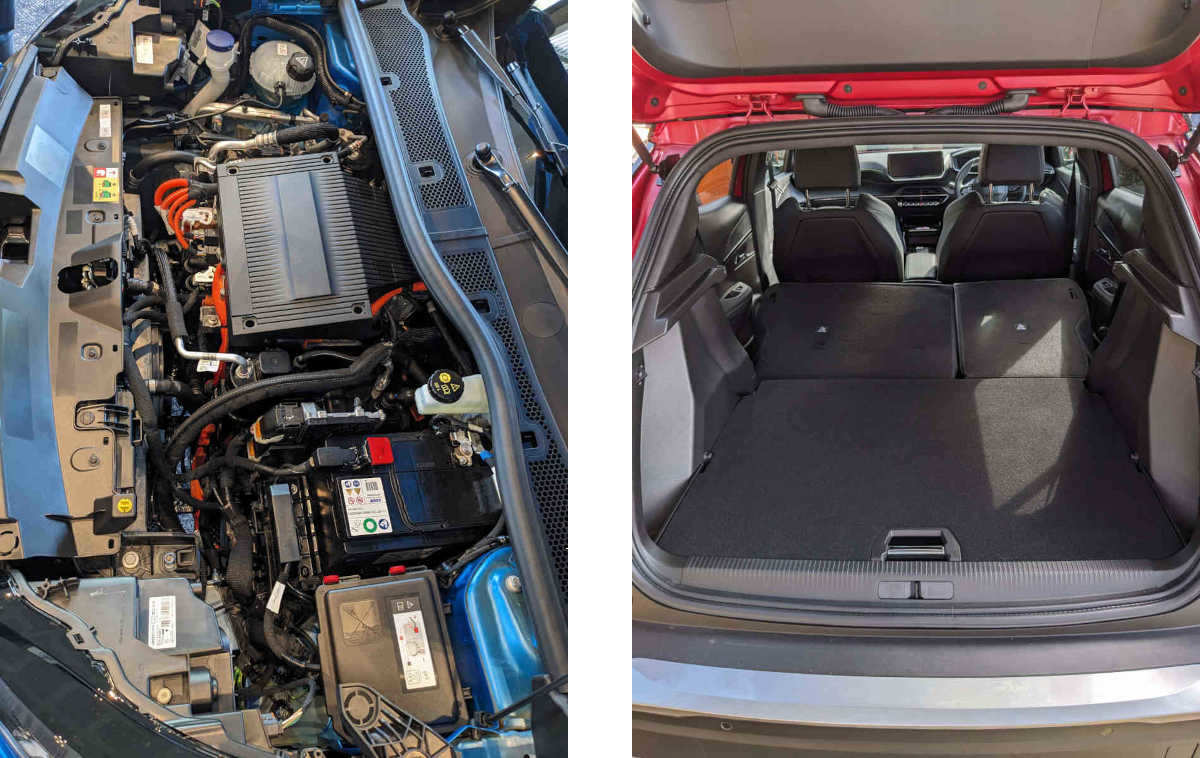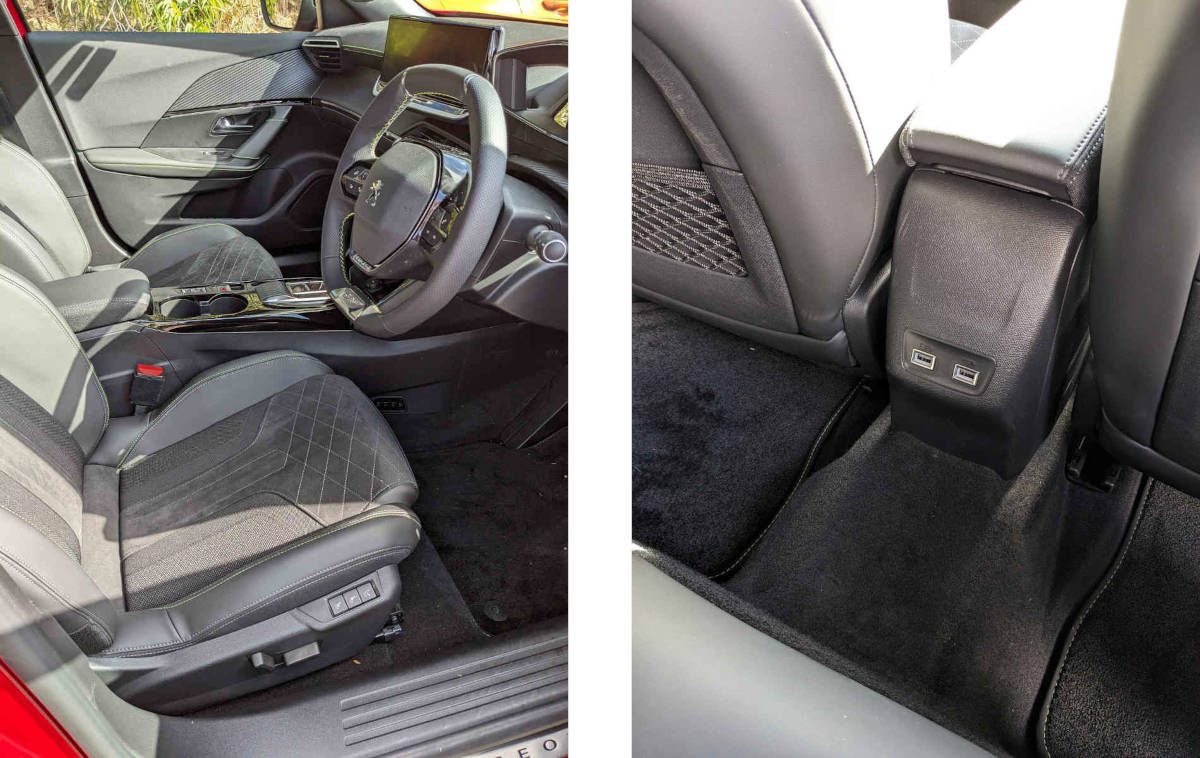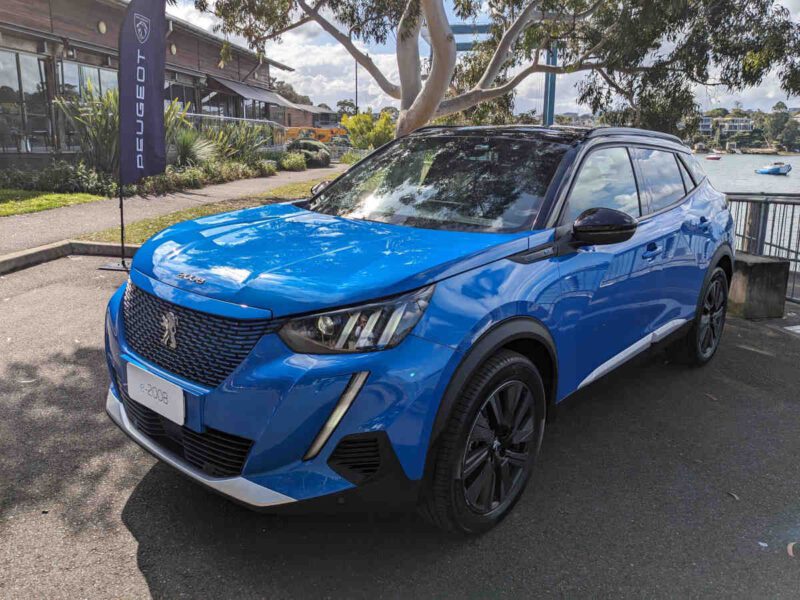Peugeot started its electrification journey like most traditional automakers, first offering mild hybrid or plug-in hybrid variants for several of their existing internal combustion engine (ICE) models. Next, Peugeot created fully electric variants of some models, and these are now finally making their way into the Australian market after launching overseas a few years ago.
The e-2008 is Peugeot’s first fully electric passenger vehicle to arrive in Australia, following closely behind the light commercial e-Partner van which went on sale in July.
Both of these vehicles are conversions of existing ICE models, and pricing for the e-2008 matches the e-Partner at $59,990 before on-road costs. The Driven was invited by Peugeot to test drive the e-2008 at a launch event in Sydney last week.
When Kate Gillis, Managing Director of Peugeot Australia was asked where the e-2008 fits into the EV market, she described it as “giving customers another new offer that is a European small SUV. But it also has got its buddy, ICE engine next to it. So you’ve got a sense of choice.”
With a $59,990 price tag and just 328 km in driving range, the e-2008 might find it hard to compete in Australia’s growing EV market. Peugeot may tempt some buyers away from the ICE version of the 2008 though. For example, the similarly specced 2008 GT Sport is just over $55k driveaway, so state based EV rebates make the upfront costs comparable.
Peugeot is therefore positioning the e-2008 as a transition vehicle and this is evident as soon as you sit in the driver’s seat. After pressing the start-stop button, a fuel gauge-like state of charge indicator appears on the left side of the dash next to the remaining range.

This experience continues as you drive off in the e-2008. With 100 kW / 260 Nm in sport mode delivering a 0-100km/h time of 9 seconds, it feels sluggish off the line compared to most EVs. However, acceleration is smooth as you’d expect and the cabin is well insulated from both traffic and road noise once you get going.
Peugeot confirmed there are no major differences to the suspension setup compared to the internal combustion engine (ICE) 2008 and no local suspension tuning program for the e-2008.
Despite this, ride and comfort was above average, only feeling too firm over the sharpest bumps in the road. The e-2008 is certainly not a sporty car, but it handles reasonably well for a small SUV.
When it comes to slowing down, the e-2008 has two levels of regenerative braking. The default ‘D’ mode coasts like an ICE car as you lift off the accelerator pedal. ‘B’ mode provides weak regenerative braking without a one pedal drive mode. The brake pedal also blends regenerative and friction braking but it feels spongy at times and hard to regulate smoothly.
Once you’re done driving and need to recharge, the e-2008 is equipped with a CCS2 combo charge port. Maximum DC charging speed is 100kW, which Peugeot claims is enough to charge 0-80% in 30 minutes. The 11kW on board AC charger will recharge from 0-100% in 5 hours via 11kW 3-phase or 7.5 hours via 7kW single phase. A type-2 to type-2 charging cable is included with the car.
The charge port is located on the rear passenger side which is great for kerbside charging stations and compatibility with additional Tesla Supercharger sites which recently opened for other EVs. Interestingly, there is no way to set a charge limit on the e-2008, it always charges to 100%. Again, this is probably intentional to ease the transition for EV newcomers.
In terms of range and efficiency, we started the test drive with a full charge and remaining range close to the advertised 328 km. After the ~80 km loop we’d used one quarter of the battery and consumption was 15.4 kWh/100km. The test drive was mainly on urban roads with a maximum speed of 80km/h. This indicates you should get close to the advertised 328 km range around town, further testing would be required to determine how much less highway range is.
Choosing an e-2008 is very simple as Peugeot is offering a single spec GT version, equipped with a 50 kWh battery and 328 km of WLTP driving range for $59,990 plus on-road costs. The included colour is called Orange Fusion, with five additional colours the only optional extras. Nera Black or Artense Grey metallic paint for $690, Vertigo Blue (pictured above), Elixir Red or Pearl White premium paint for $1050.

From the outside, the e-2008 is minimally differentiated from ICE versions by blue ‘e’ badging and body coloured highlights on the front grille. Peugeot has kept all exterior and interior dimensions the same as the ICE 2008 including a decent boot space of 434L. One notable omission for the e-2008 is towing, unfortunately you can’t ruin your weekend with this EV.

Moving onto the interior, the e-2008 is well appointed and features Peugeot’s i-CockpitTM 10-inch digital instrument cluster with an 8-inch centre display. There’s wired Apple CarPlay, Android Auto, wireless phone charging, sunroof as standard, heated front seats and massage function for the driver. The front seats had plenty of adjustment and were comfortable during the test drive.
Controls for air conditioning and the centre display are somewhat confusing with a mixture of physical switches and a row of non-haptic buttons above. Touch inputs on the centre display were laggy at times as well. These shortcomings could be less of an issue if you’re using Apple CarPlay or Android Auto for navigation and audio.

Rear headroom is good, although amenities are limited to bottle holders in the doors, two USB-A ports and back seat pockets. There are no air vents for rear seat passengers and middle seat legroom is compromised by a transmission tunnel hump.

Driver assistance and safety features in the e-2008 are fairly comprehensive without any obvious omissions for a car in this price range. They include adaptive cruise control, lane-keeping assist, automatic emergency braking, rear cross traffic alert, blind spot detection, lane departure warning, Acoustic Vehicle Alert System (AVAS), 180 degree reversing camera with top down view.
Peugeot provides the e-2008 with a 5 year / unlimited km warranty, plus 8 years or 160,000 km on the battery pack. Peugeot’s warranty terms and conditions don’t specify exactly what the battery warranty covers in terms of battery health though. Service intervals are every 12 months or 25,000km and Peugeot offers 3 or 5 year service plans for $600 or $1000 respectively. A tyre repair kit is also tucked away nicely under the boot floor.
Gillis was asked about Peugeot’s future electrification plans and confirmed two new fully electric variants would be coming to Australia next year.
The e-208 hatchback and larger light commercial e-Expert van, although like the e-2008 these are both conversions of existing ICE models. (See our review from a France road trip here: Douce France in an electric Peugeot: Just don’t get a puncture)
Gillis also confirmed the facelifted e-2008 that was recently revealed overseas should arrive locally in 2024 as well. The facelift includes tweaks to the exterior styling and interior features, 15 kW more power and a slightly larger 54 kWh battery which improves driving range to 406 km WLTP.
Peugeot will need to release more compelling EV only models if they want to remain competitive in the future. But even if the e-2008 doesn’t suit your needs, it is great to see another brand offering fully electric models and giving consumers more choice in the Australian market. The e-2008 is available to pre-order now and customer deliveries commence this week.
Key features and specifications for the Peugeot e-2008 are below:
| Price | $59,990 plus on-road costs |
| Optional extras | 5 optional exterior paint colours:
|
| Battery chemistry | Nickel Manganese Cobalt (NMC) |
| Battery size | 50 kWh gross, 46.3 kWh usable |
| Range | 328 km WLTP |
| Driven wheels | Front-wheel drive |
| Power / Torque | Eco: 60 kW / 180 Nm Normal: 80 kW / 220 Nm Sport: 100 kW / 260 Nm |
| Charging Speed | 100 kW DC, 11 kW AC |
| Charging Socket | CCS2 combo |
| Exterior Dimensions | Length: 4300mm Width: 1987mm (incl. mirrors) Height: 1550mm Wheelbase: 2605mm |
| Storage Space | No frunk Boot, rear seats up: 434L Boot, rear seats folded: 1467L |
| Service Interval | 12 months / 25,000 km |

Tim has 20 years experience in the IT industry including 14 years as a network engineer and site reliability engineer at Google Australia. He is an EV and renewable energy enthusiast who is most passionate about helping people understand and adopt these technologies.

